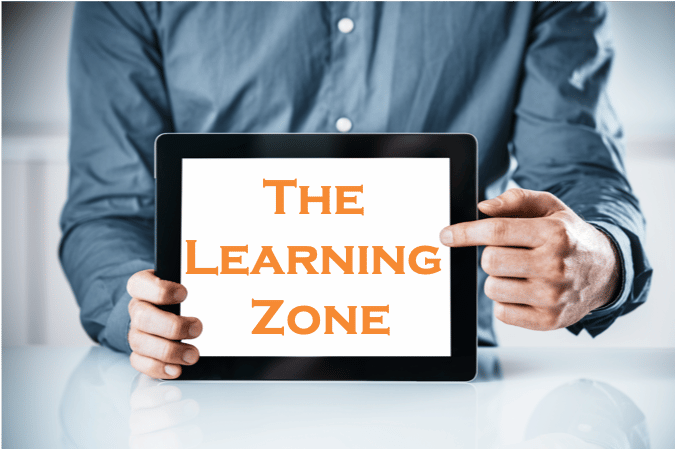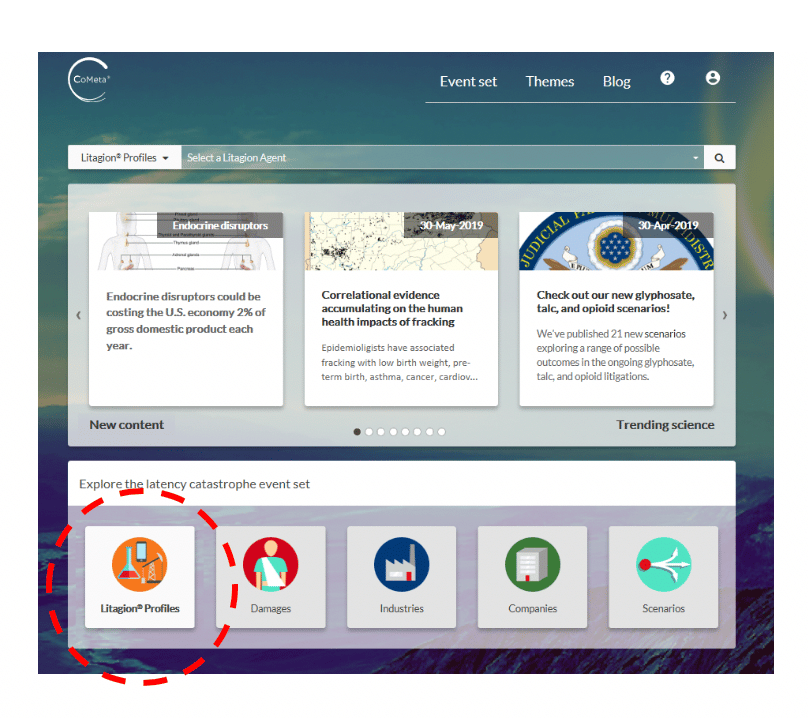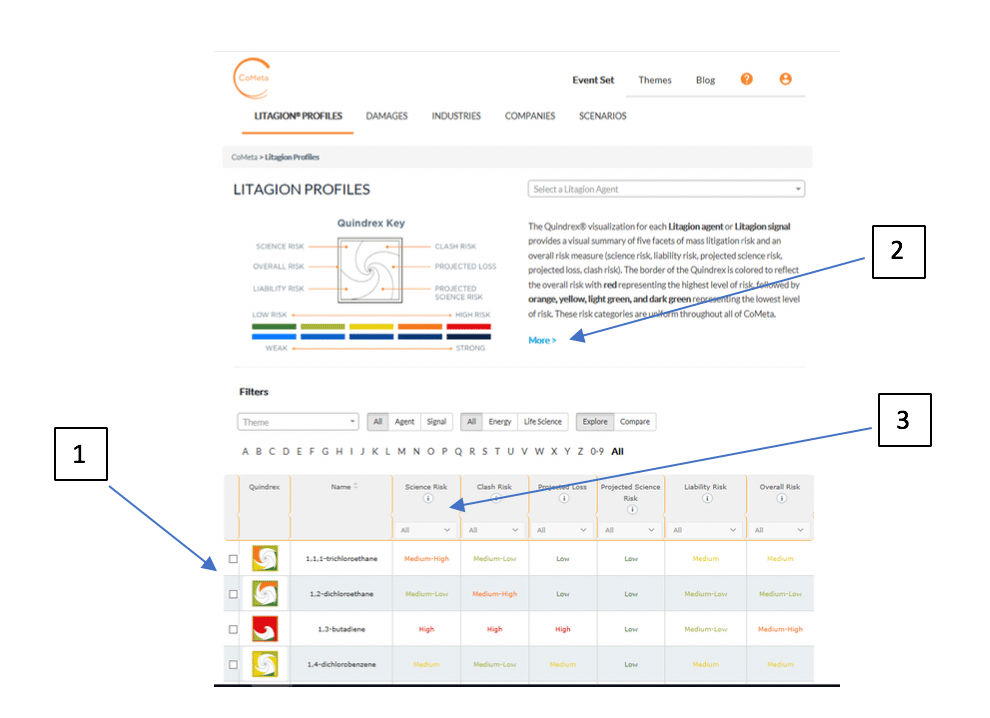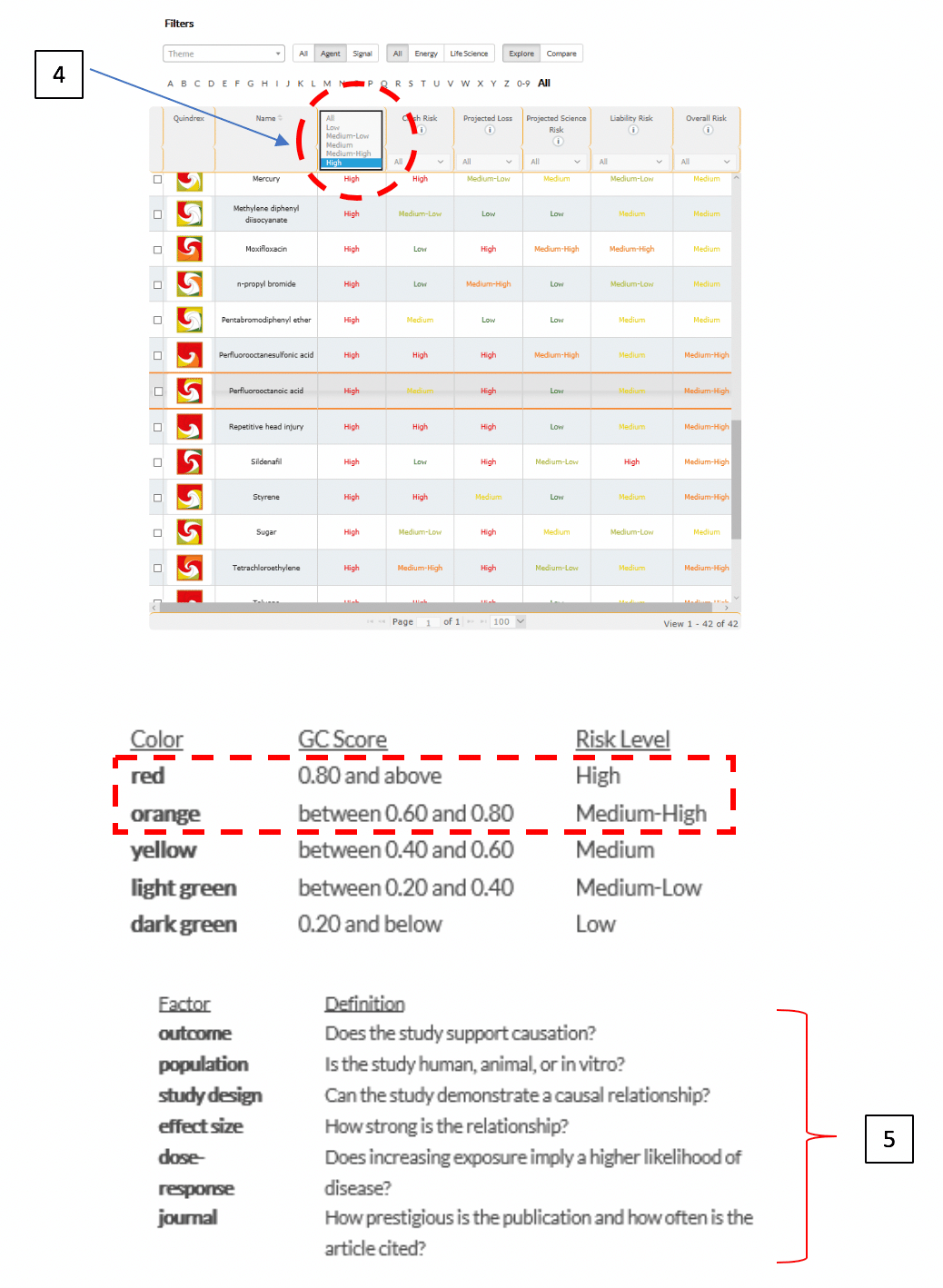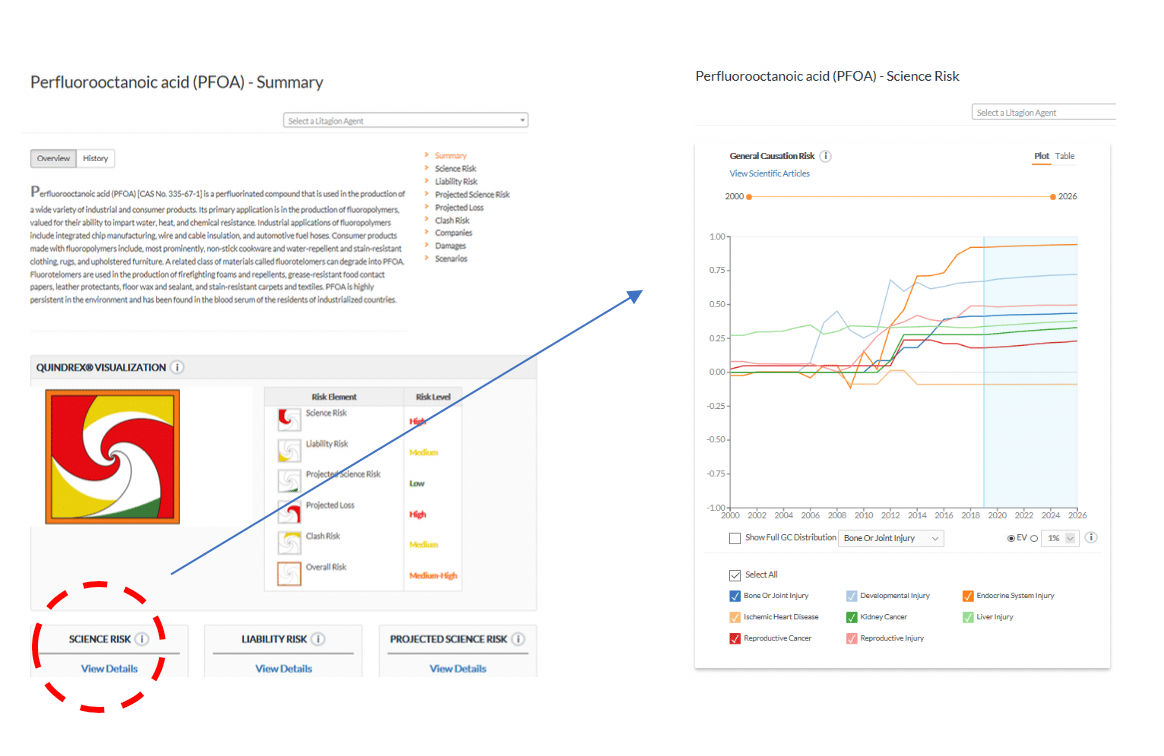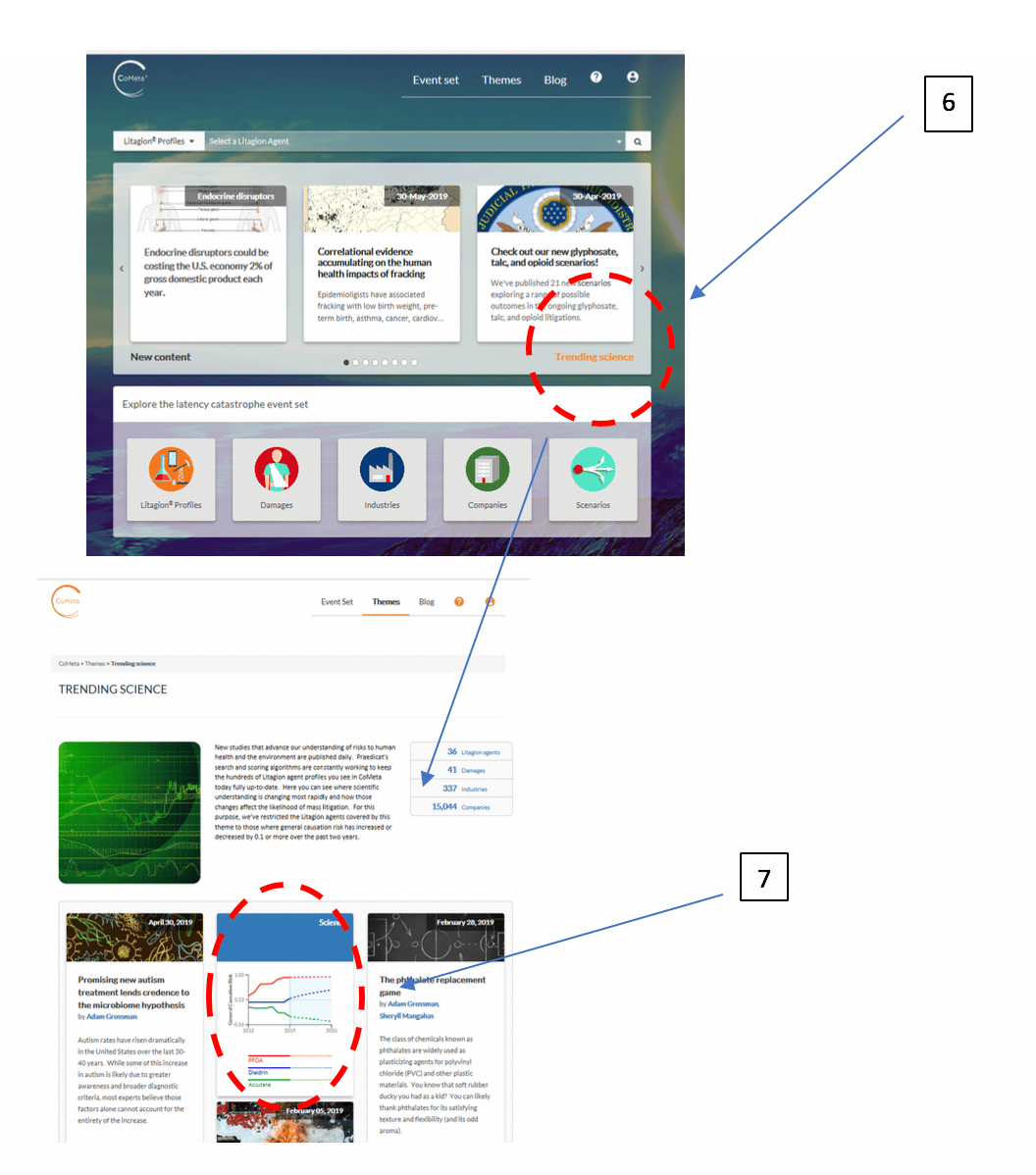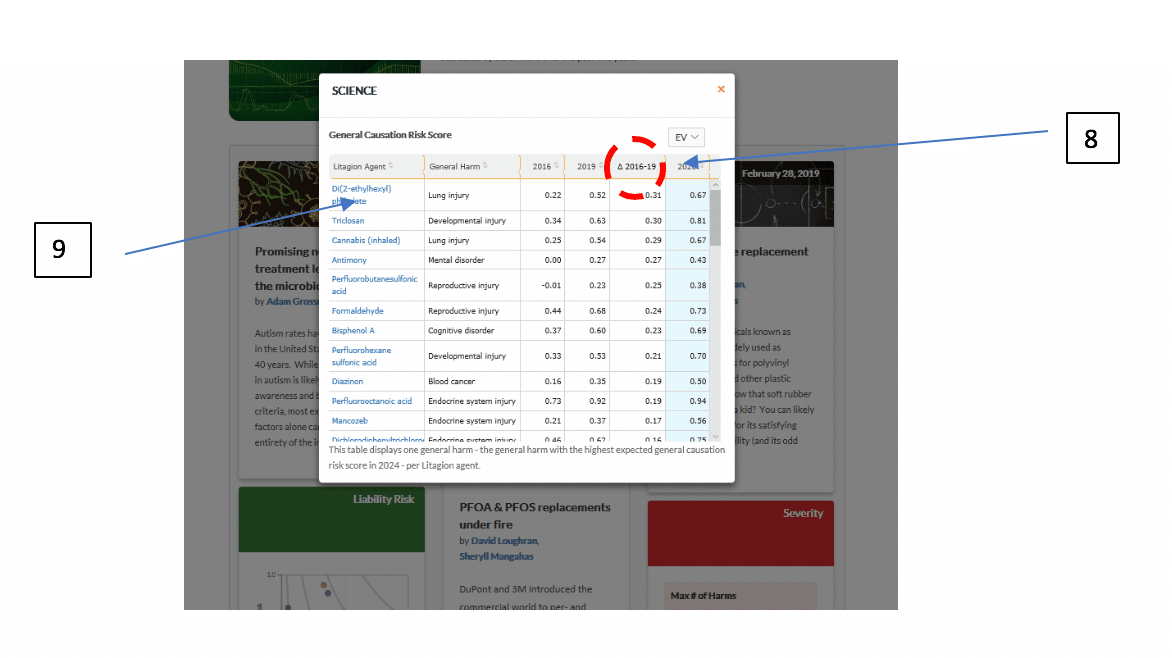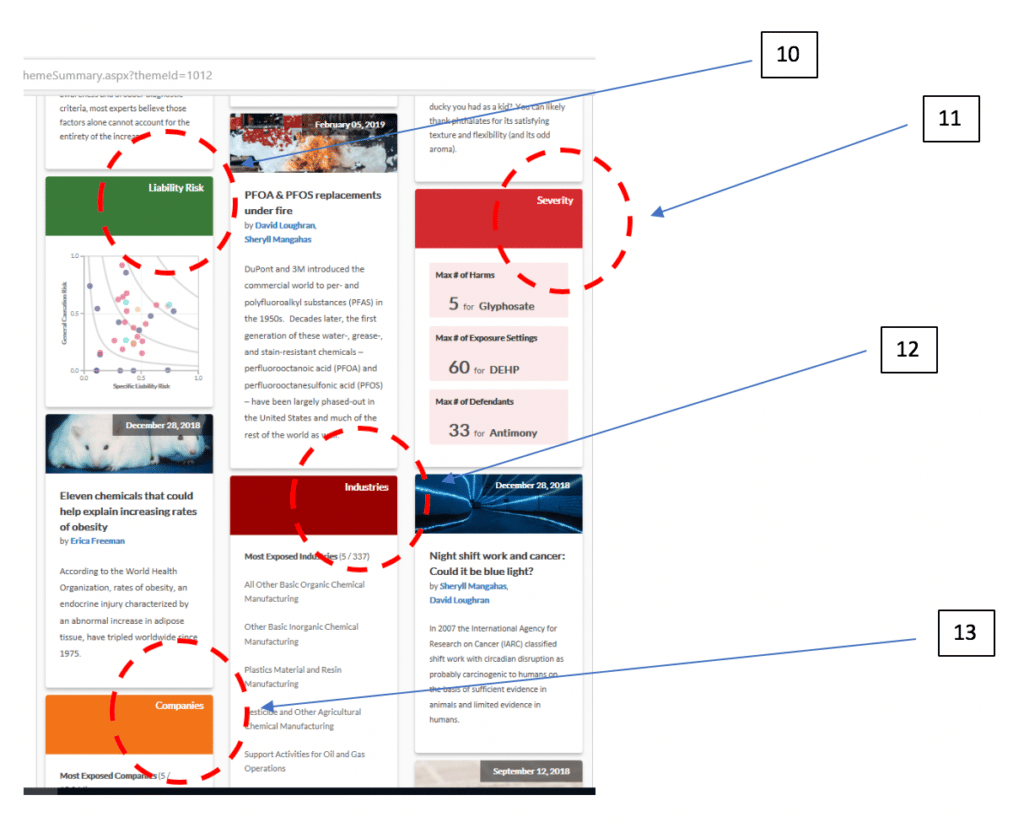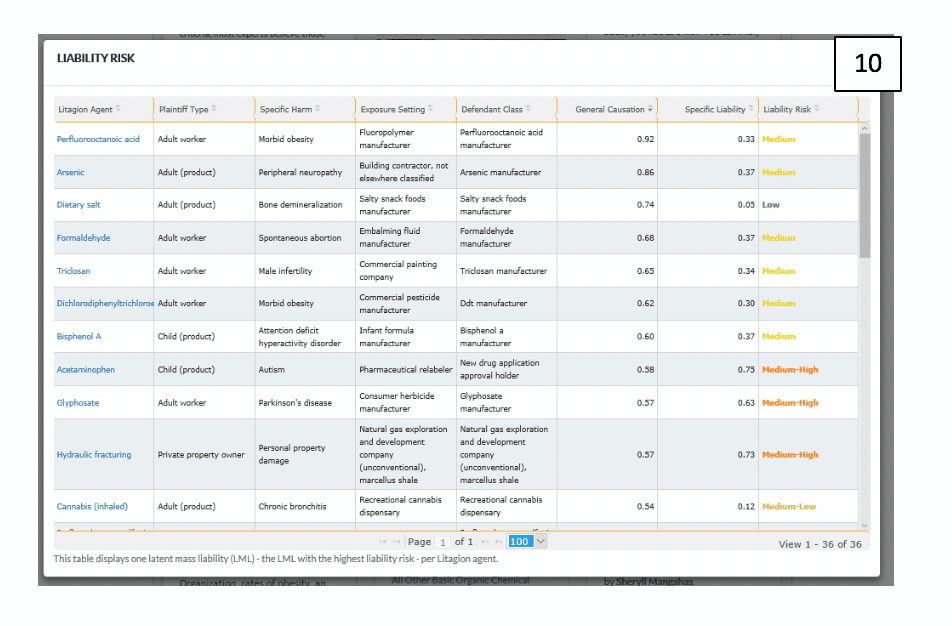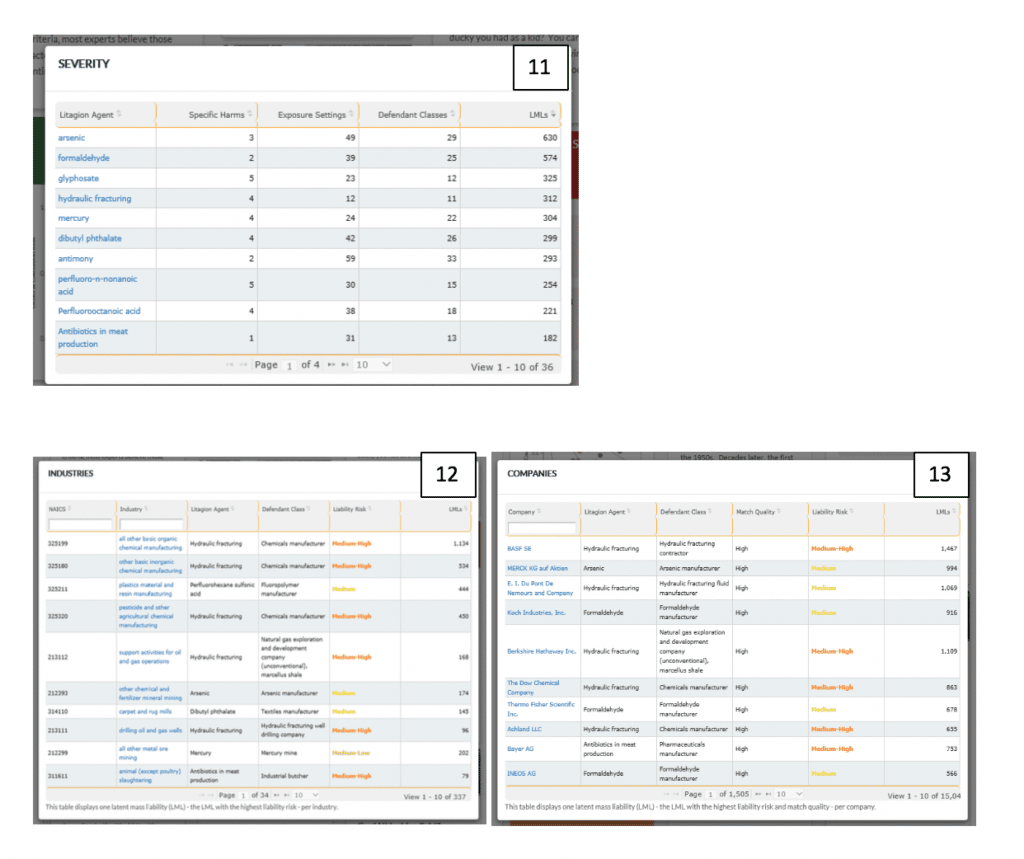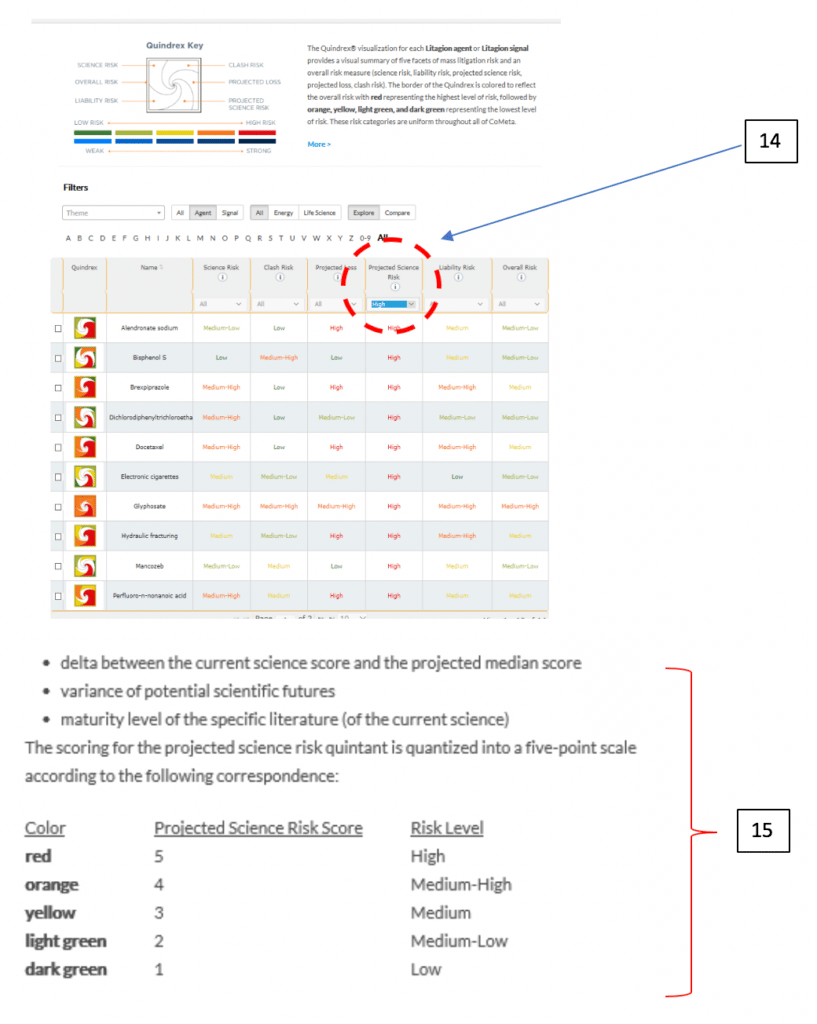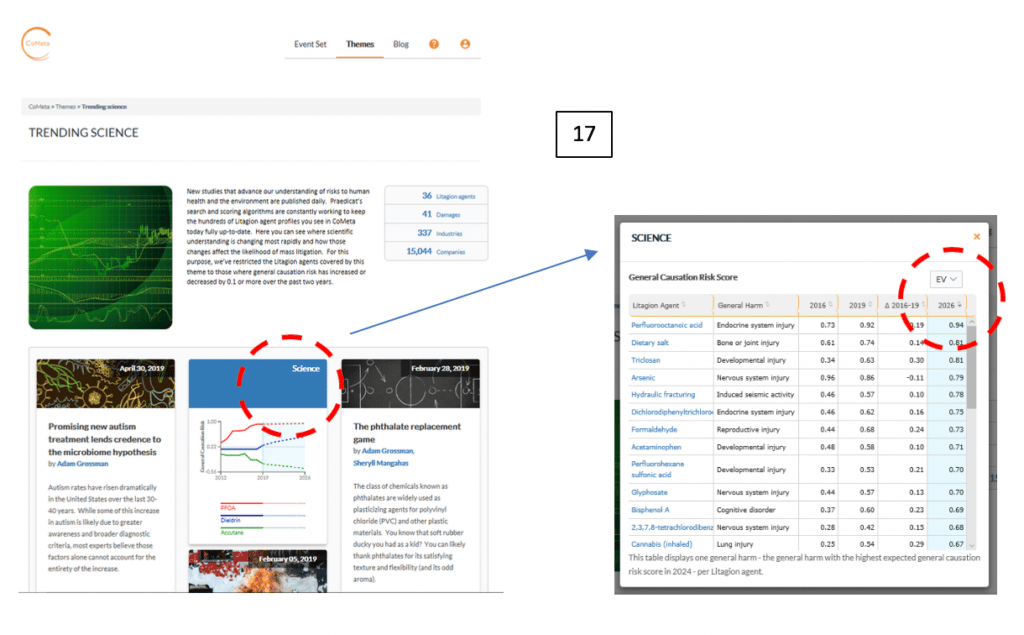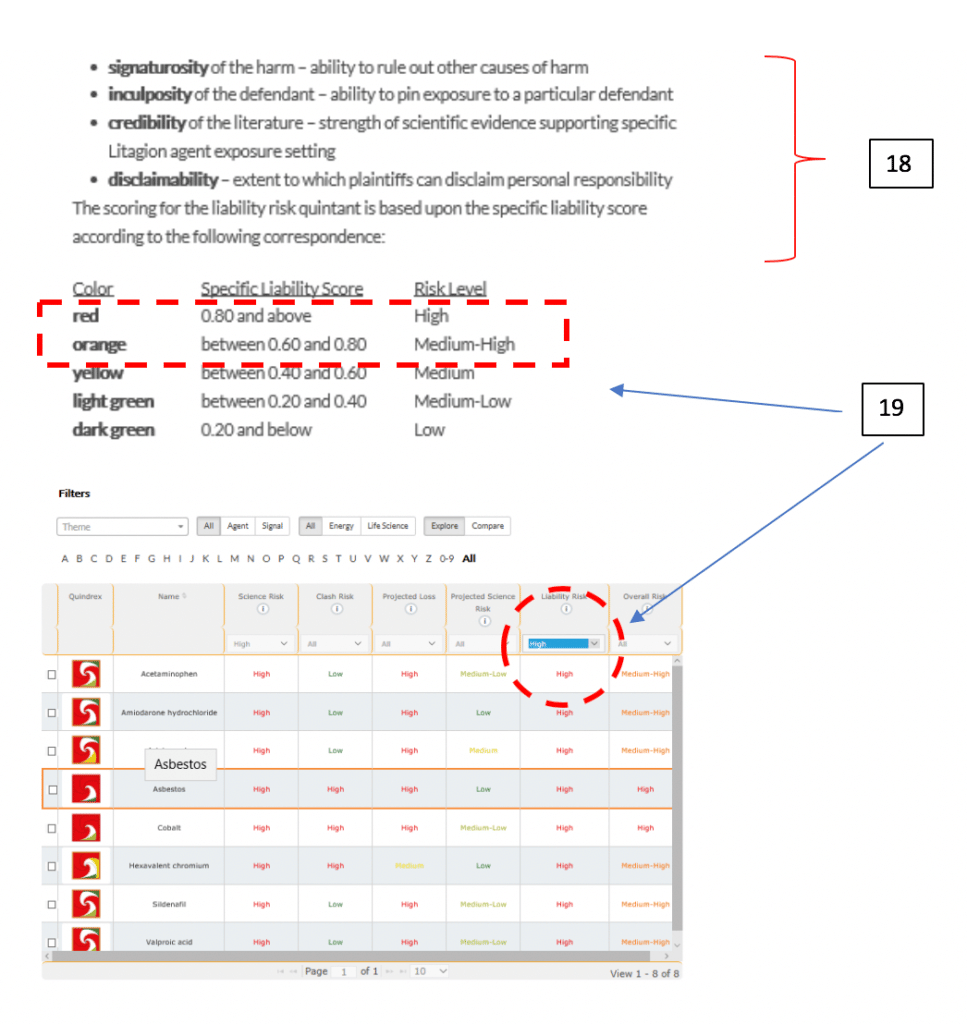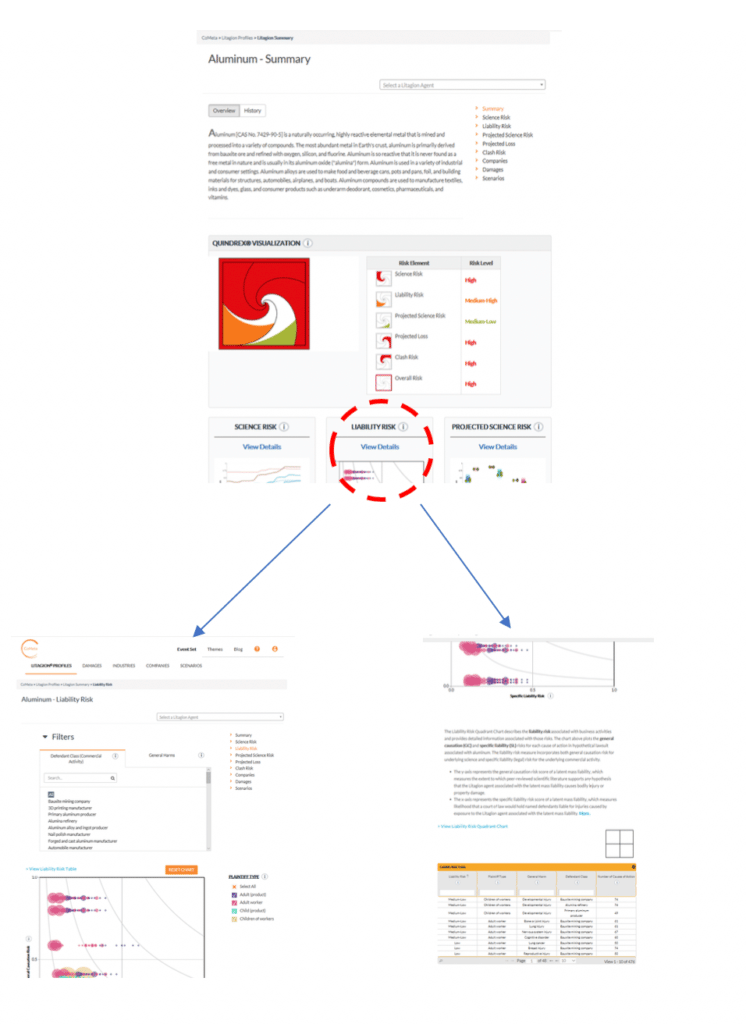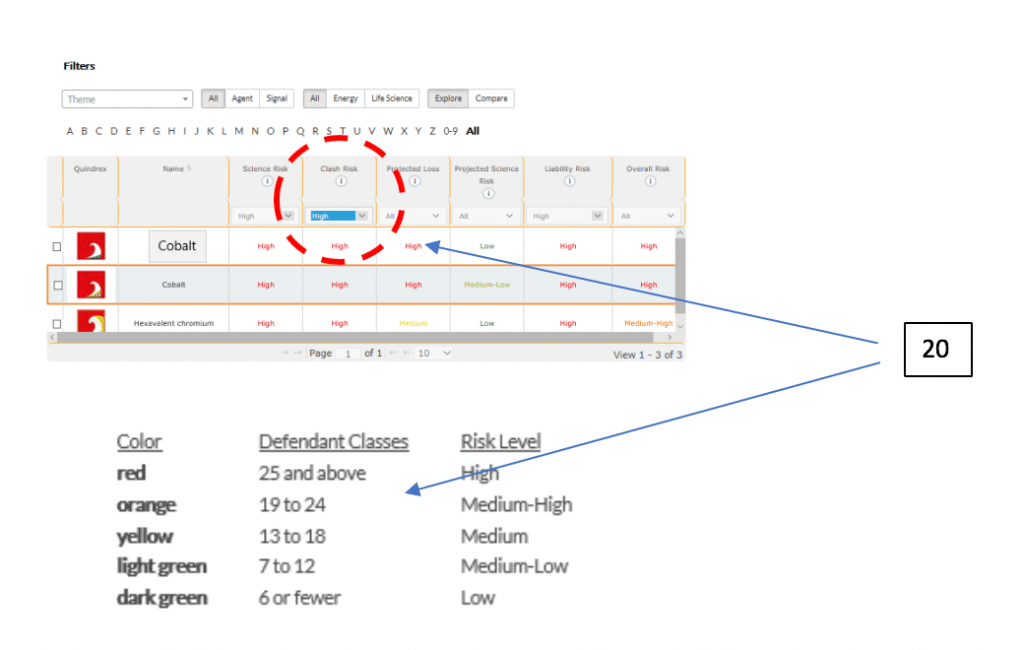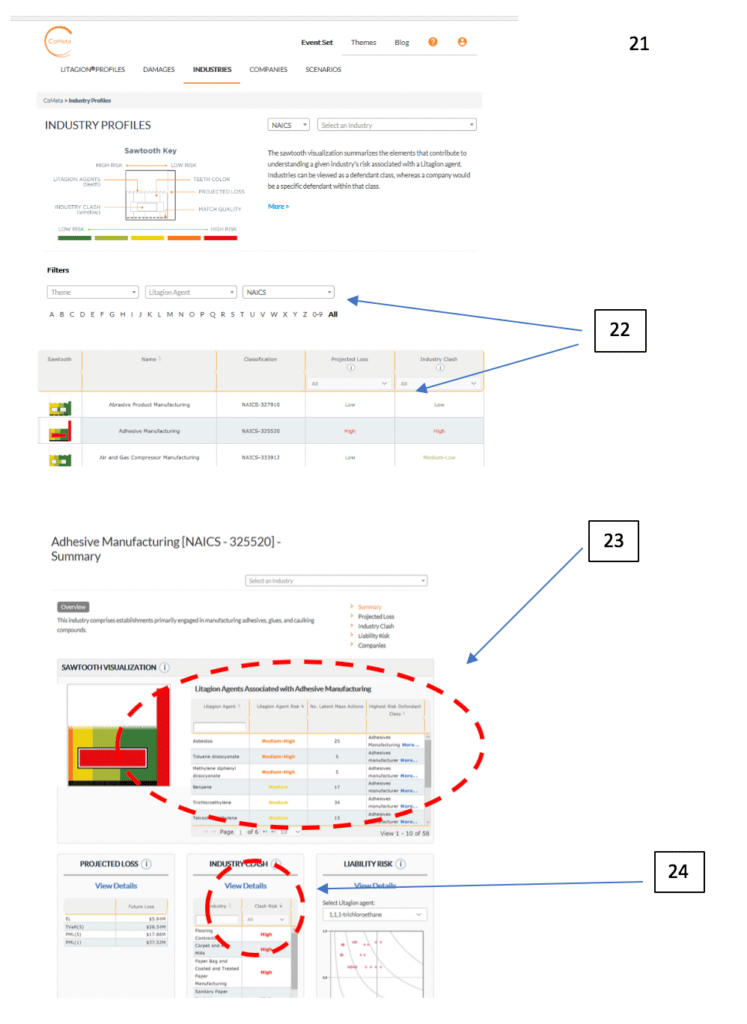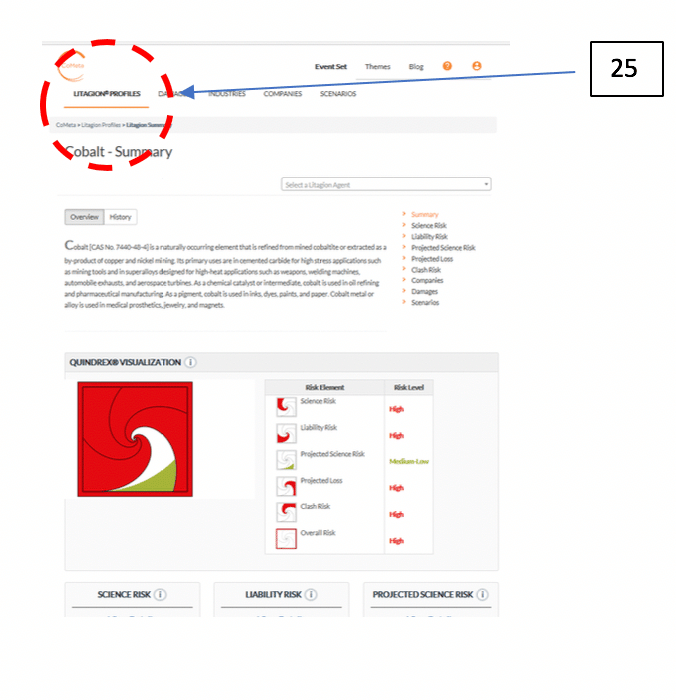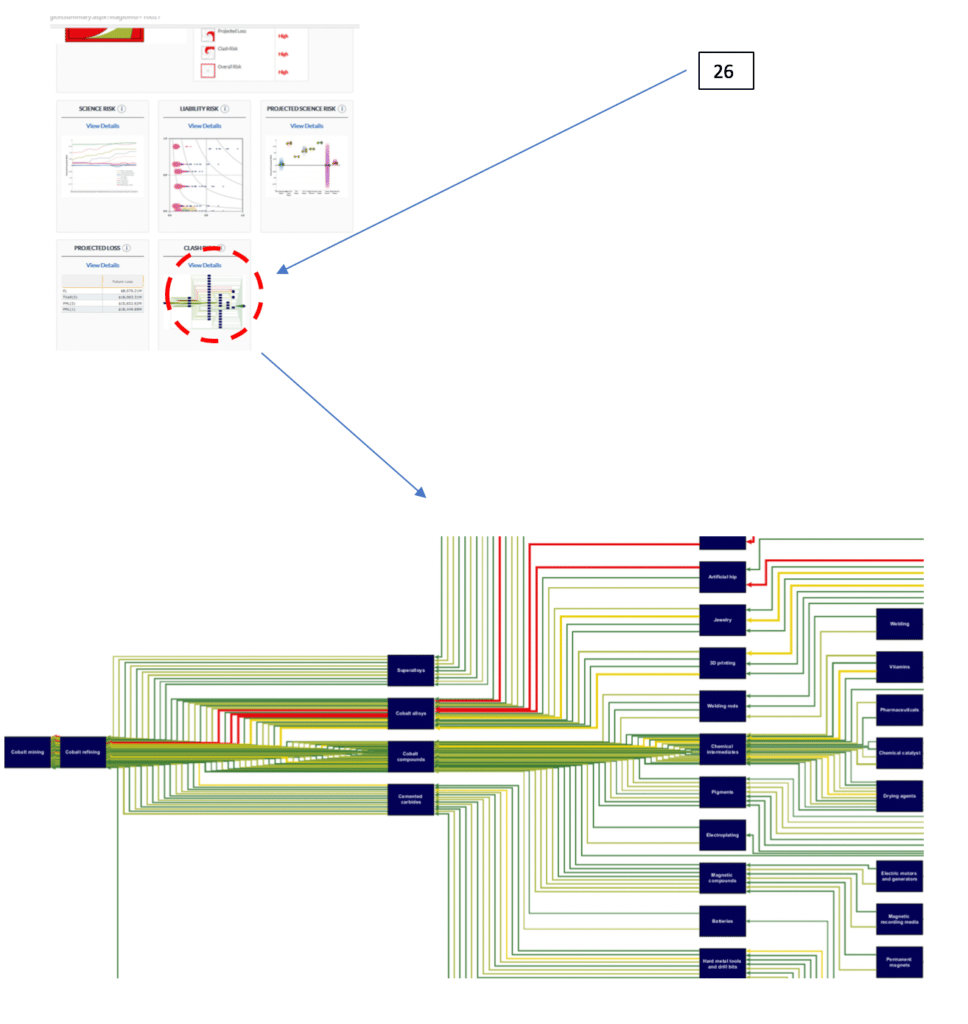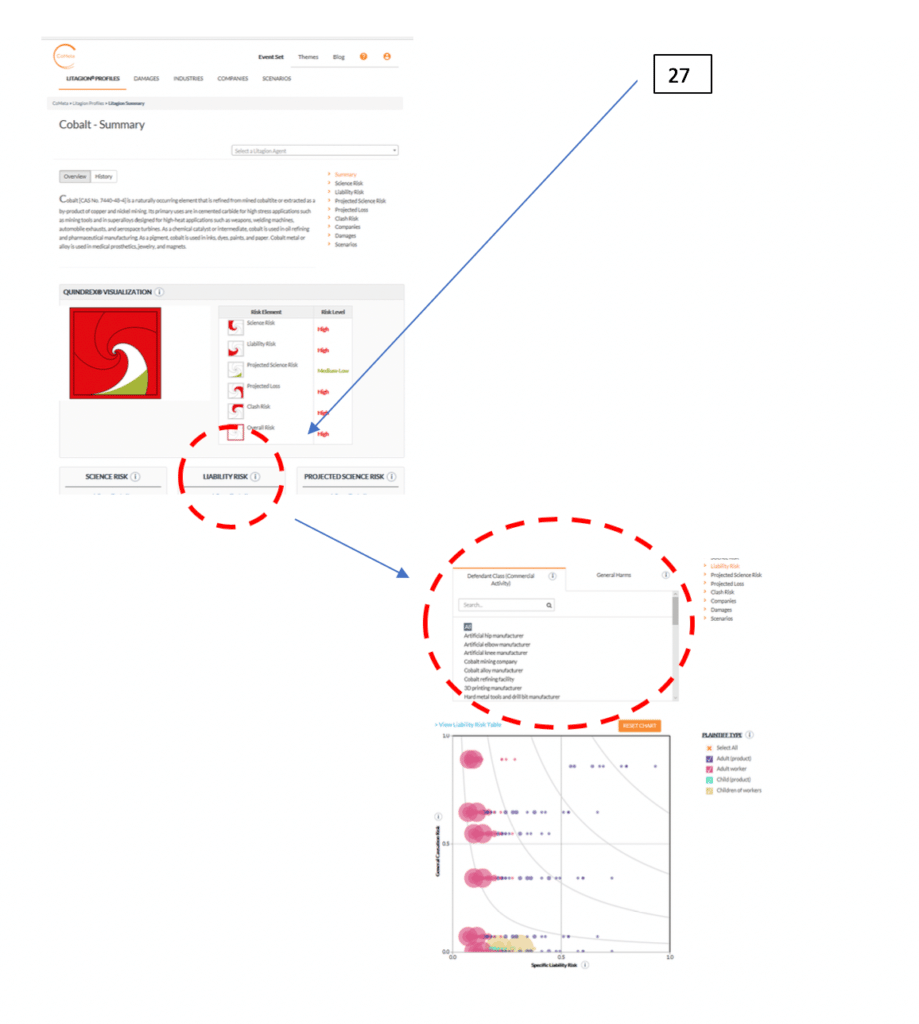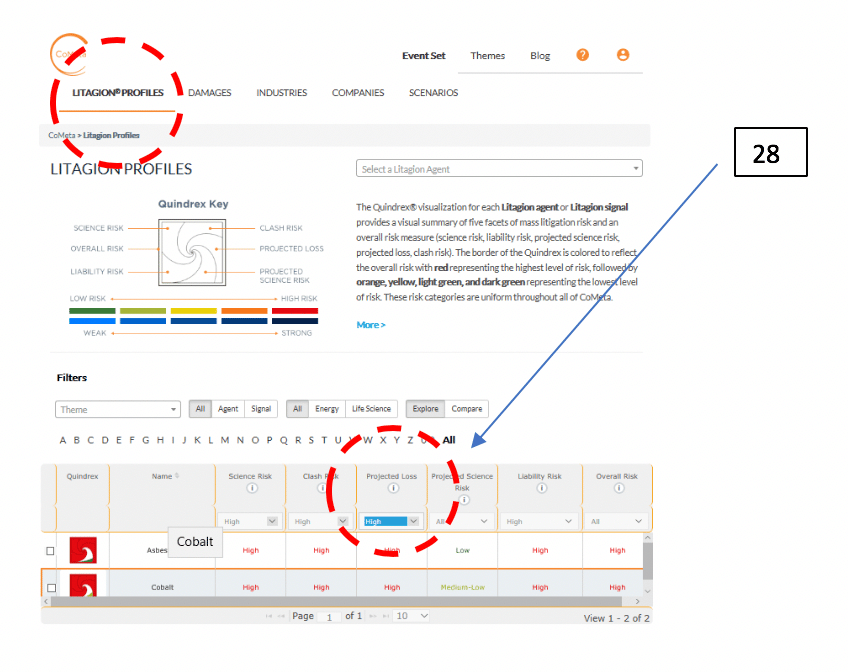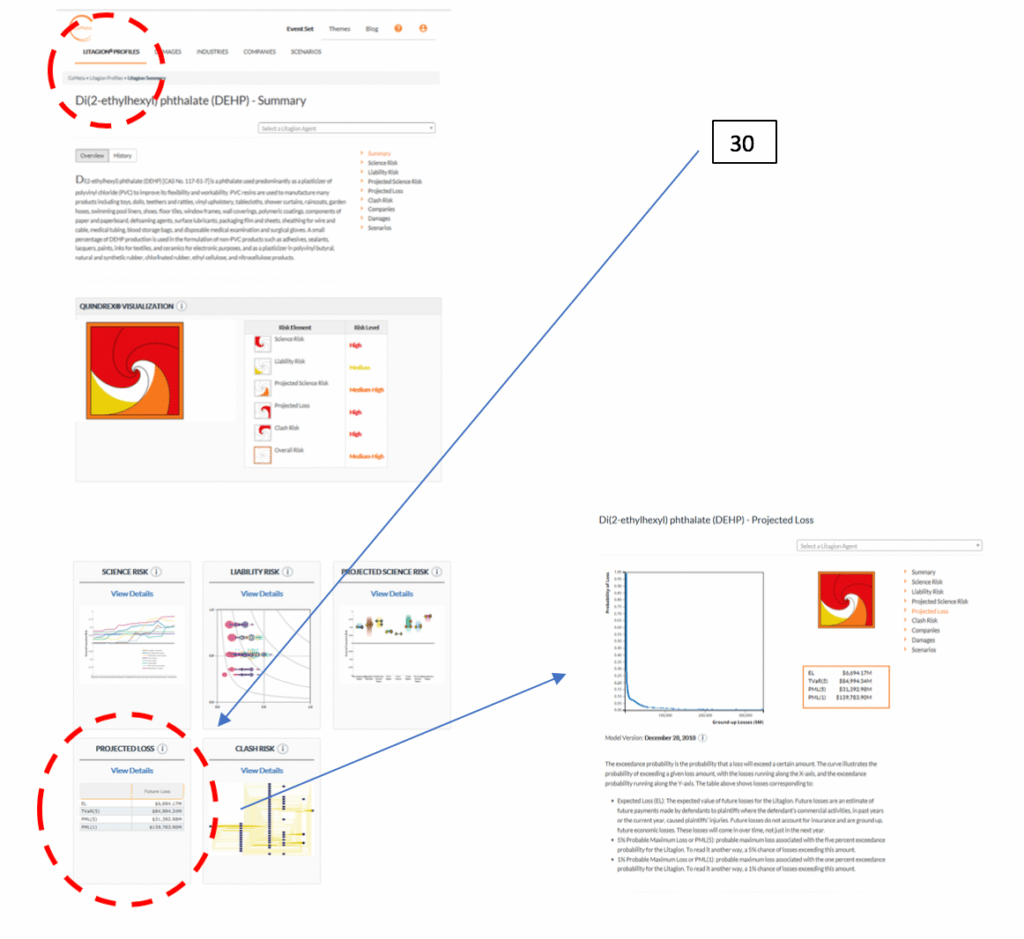Horizon Scanning with CoMeta: Using Praedicat’s science-based analytics to detect signals of emerging risk as an early warning system
What risk is keeping you up at night? Do you wish you understood more about its potential to become the next asbestos? On the flip side, what risk has the potential to take off and drive significant mass tort litigation but is not even on your radar? Are your exclusions appropriately designed to protect your company’s balance sheet or are you leaving premium on the table and contributing to the widening protection gap with overbroad exclusions?
Studies have shown that gazing out to the horizon for a prolonged period can cause the brain to release endorphins. While we can’t promise you a runner’s high every time you use CoMeta, by adopting some of the approaches to horizon scanning described here in this segment of the Learning Zone, we can help you to be more confident in identifying the emerging risks of greatest concern, taking innovative approaches to risk selection, and being proactive rather than reactive when mitigating latent liability risk.
Praedicat Uses Science as a Risk Indicator
At Praedicat we use science as our basis for identifying what might be “the next asbestos.” Unlike traditional actuarial models, Praedicat’s probabilistic loss model does not rely on past claims experience to forecast future losses. Instead, our model looks to scientific literatures to identify the commercial activities today that could lead to insurance claims in the future. By reading in excess of 35 million peer reviewed scientific journals in PubMed, we have identified a shortlist of 257 candidates (including processes, chemicals and phenomena) which we believe have the characteristics that could result in widespread litigation against individual companies, resulting in significant economic impact to the insurance industry. We call these Litagion® agents. Of these 257 Litagion agents, we probabilistically model 71 which have the potential to cause >$1b economic loss at a 1% probability.
We focus our modeling approach on science because science is the risk, i.e., it is critical to how litigation in the United States unfolds. Evidentiary standards embodied in landmark cases such as Frye v. United States (1923) and Daubert v. Merrell (1993) require plaintiffs to establish that the scientific community generally accepts the causal hypotheses central to their allegations. Without strong supporting science, mass litigation is simply not possible in the United States.
The Importance of Emerging Risk Definitions
Defining what is meant by an “emerging risk” can be subjective. Any one of the five different risk dimensions (Science Risk, Liability Risk, Clash Risk, Projected Loss Risk, Projected Science Risk) can be used to build a definition. It is however very important that you have an agreed upon definition within your business, to support systematic and periodic review of these risks. This doesn’t mean that your definition cannot evolve over time, but your review criteria should always be clearly articulated.
For the purposes of this Learning Zone article, we emphasize that “science is the risk” and will therefore focus on using Praedicat’s measures of current science risk and projected science risk to engage in horizon scanning and identify the emerging risks that should be the focus of concern for your organization.
Some Important Horizon Scanning Questions
When horizon scanning, you may want to answer the following questions;
- What does the current risk landscape look like, and how do Litagion agents compare against one another?
- If current scientific consensus supports a harm-hypothesis, but litigation around a Litagion agent hasn’t started yet, what other risk variable should I be considering when thinking about the level of risk posed?
- What Litagion agents have seen a significant and recent increase in science risk?
- What Litagion agents have the potential to pose a risk to my business in the future?
Possible Ways to Define Emerging Risks
Based on the four questions above, there are four ways horizon scanning can be performed to identify emerging risks, using science as an indicator:
- Understanding the current risk landscape – This approach allows you to review and contrast the risk associated with all the Litagion agents profiled by Praedicat. It provides a baseline for categorizing relative risk emanating from the science as it stands today.
- Science risk has developed significantly over time, up to the present day – This approach considers how interest around a Litagion agent or specific harm-hypothesis has increased over time, up to the present day. Typically, when scientific findings start to produce compelling results, more studies are undertaken, and an increase in published scientific evidence may move the GC score (positively as well as negatively). Looking at the scientific trajectory over the past can help to contextualize how quickly the science might progress into the future.
- Science risk is projected to increase significantly in the future – Praedicat use past publication rates to project how the science might progress over the next seven years. This approach identifies Litagion agents that don’t necessarily have a significantly high GC score today, but where future GC projections highlight that there could be significant risk in the near-term future. Praedicat projects over a seven-year window because our research has found that, on average, it takes seven years from publication of initial articles exploring a hypothesis to public awareness, regulatory response or litigation and not forecasting beyond seven years helps to avoid “noise” around these projections.
- Current science risk is rated as “High” or “Medium-High”, but other risk metrics aren’t – There may be significant evidence today to support a harm-hypothesis, but litigation has yet to gain traction in the US courts. This will likely be to do with other legal factors which should be considered, along with the potential for loss if litigation were to progress.
Each of these approaches is tailored to answer a particular question, but an overall robust methodology would likely require you to perform more than one of these approaches.
We will now look at how you might use CoMeta to perform horizon scanning in these four ways.
Understanding the Current Risk Landscape
You’ll want to start by looking at the risk associated with all the Litagion agents available within CoMeta. To do this, navigate to the Litagion agent profile data — on the CoMeta landing page, select the Litagion Profiles.
This will take you to the dashboard containing all the Litagion agents that CoMeta currently profiles [1]. This dashboard summarizes and allows you to directly compare the five dimensions of risk associated with each Litagion agent. Each dimension and its risk category is explained in detail when you click the More icon [2].
In CoMeta, you can look at the Litagion agents with the highest science risk today – which translates into those which have the highest GC scores. To do this, filter on the Science Risk column for those with a High science risk [3 & 4].
The resulting list contains all Litagion agents which have a GC score for any “harm hypothesis” equal to or above 0.80. You can see that Bisphenol A (BPA) and Perfluorooctanoic acid (PFOA) are on the list of chemicals with high science risk because one of their harm hypotheses is equal to or greater than 0.80. An example of a harm hypothesis would be Perfluorooctanoic acid (PFOA) causing endocrine system injury or Bisphenol A (BPA) causing reproductive injury. The highly positive GC scores signify that the scientific consensus for these harm hypotheses is strong – to give an example, scientists overwhelmingly support the causal link between asbestos and mesothelioma.
Another significant threshold to consider is GC scores that equal or exceed 0.65. For a GC score to be at this level there needs to be clear positive harm hypothesis links supported by in vitro, animal and human studies and published in influential journals with statistically significant sample sizes [5]. When the GC score is at this level, there is a meaningful scientific consensus that this particular Litagion agent causes this exact harm, making it likely that the body of evidence would satisfy a Daubert hearing and could be used as expert testimony in court. The Litagion agents labelled as having “Medium-High” science risk are therefore also important in identifying current risk. You may wish to compile a list of the Litagion agents with both “High” and “Medium-High” science risk, ensuring that any Litagion agent with a GC score for any harm hypothesis of 0.65 or greater is on a watch list, you understand your portfolio exposure to these Litagion agents, and you have action plans around them.
You may have heard a lot about BPA and PFOA – after all, these are risks that are often in the news, showing up on environmental watchdog groups’ lists of chemicals that consumers should avoid, and the targets of significant regulatory scrutiny and action. The science around BPA’s and PFOA’s harm hypotheses is well developed, but you may wish to learn more about the potential liability risk and impact to the economy that these chemicals pose.
You have now uncovered the current risk landscape by identifying and ordering all Litagion agents where the scientific evidence could support a claim in court today, but to drill into these high-science risk Litagion agents’ other components of risk, please go to the detail in the appendix at the end of this article (Understanding the current risk landscape: Drilling Down on All Components of Litagion Agent Risk).
.
If you license ChemMeta, you can also drill further into the impact individual studies have on assigning the GC scores. Please ask your designated Client Engagement Manager for a ChemMeta demo, or further assistance/data/training.
Science Risk has Developed Significantly Over Time
This approach looks specifically at whether the scientific evidence around a harm hypothesis has changed the GC score significantly over a specified time period to the present day. At this point we are not considering what the science might do in the future, we are purely reviewing the progression of a scientific harm-hypothesis from when scientists started researching it up until today.
In CoMeta there is a “Theme” called “Trending science”. You can access this on the CoMeta landing page following log-on [6].
Litagion agents within the “Trending Science” theme have been identified as those where the GC score has increased or decreased by 0.1 over the last 2 years. This highlights the Litagion agents where there has been significant science published within that timeframe – enough to move the GC score.
For emerging risk identification, you will likely be most interested in those Litagion agents where the GC score has increased (rather than significantly decreased). To see these, click into the ‘Science’ card [7], and click on the delta change column heading to sort the Litagion agents to give those with the highest delta [8].
Based on the current GC score, it’s possible that some of the Litagion agents highlighted here are also being picked up in the output from your review of the current risk landscape. You may wish to pay particular attention to these Litagion agents, as they will not only have a significantly high current GC score, but will also have developed this score quite quickly.
You can see more detail for each Litagion agent in the list by clicking on the Litagion agent name [9] which will take you to the Litagion agent CoMeta profile.
The trending science theme displays all the important information relating to the Litagion agents that have harm hypotheses that have developed significantly over time;
- Liability Risk [10] – For each Litagion agent with the largest GC movements over the last two years, the highest specific liability risk detail is provided. This gives insight into the exposure setting with the highest likelihood to have successful claims in court if the litigation were to advance. The information provided in this view includes the type of plaintiff (Adult Worker), the specific harm (Parkinson’s Disease), the exposure setting (Consumer Herbicide Manufacturer), the defendant class (Glyphosate Manufacturer), the specific liability score and risk (0.63, Medium-High), and the associated GC score for that harm hypothesis (0.57).
- Severity [11] – The severity is an overview of the numbers of specific harms, exposure settings and defendant classes that could be implicated in any future litigation, for each Litagion agent with the largest GC movement over the last 2 years.
- Industries & Companies [12 & 13] – Identifies the companies and industries that are most exposed to the Litagion agents with the largest movements in GC score over the last 2 years. It also provides information around which defendant classes these companies and industries might fall into, if they were involved in litigation for a specific Litagion agent.
This approach allows you to highlight the Litagion agents where publication of scientific evidence has gained traction over a relatively short timeframe. It may be that the current science risk is now a concern to your business, where it may not have been five years ago. It also might be a good indicator of where the science may be going in the future if studies impacting the GC score positively have been published in only the last few years. You may wish to add Litagion agents with rapidly increasing GC scores up to the present day to your emerging risk list and monitor their current science risk going forward.
Science Risk is Projected to Increase Significantly in the Future
This screening filter for emerging risks of significant concern considers how the science risk might evolve in the future using Praedicat’s projected science risk scores. Praedicat uses past publication rates to project the GC scores for all harm hypotheses seven years into the future.
There are various ways in CoMeta that you can evaluate projected science risk measures and factor them into your emerging risk identification and management approach:
- Reviewing the projected science risk category for a Litagion agent against the current science risk category.
- Reviewing whether the projected science GC score for a particular harm hypothesis will breach a defined threshold sometime within the next seven years.
If you want to identify the Litagion agents with the potential for the science risk to increase significantly in the future, you can use the filters on the Litagion profiles page in CoMeta [14].
Litagion agents projected science risk has been categorized as a function of the delta between the current science risk GC score and the median projected science risk GC score [15].
You’ll want to pay the most attention to those Litagion agents where the current science risk is lowest, but the projected science risk is highest. A good example is Bisphenol S [16], whereby if you look at the GC score plot, you’ll notice that this Litagion agent only began being studied in 2015 but the recent trajectory of the science has resulted in a high projected future science risk. As a result, Bisphenol S rates “Low” for Science Risk but “High” for Projected Science Risk. Considering that Bisphenol S is increasingly used as a substitute for Bisphenol A, understanding the development of Bisphenol S’s science risk is critically important.
When you filter for “High” Projected Science Risk in CoMeta, you will see that Perfluorohexane sulfonic acid (PFHxS) is also classified as having “High” Projected Science Risk but currently has “Medium” Science Risk. As recently as 2011, the GC scores for all three of its harm hypotheses hovered around zero or were negative. Now all the GC scores have developed significantly and are greater than 0.35. PFHxS has been introduced as a substitute for PFOA, but will it ultimately prove to be as harmful as the chemical it is replacing?
The above approach is based upon median projected science risk and is not harm hypothesis specific. Praedicat does, however, make the inherent uncertainty around a GC projection visible in CoMeta, and all scores are available on a harm hypothesis basis for each Litagion agent profiled.
This information is available in CoMeta under the “Trending Science” theme [17] for the Litagion agents where a harm hypothesis GC score has moved by 0.1 in the last 2 years.
In the trending science card [17] you can see that the projected GC scores being shown are Expected Value (mean) GC scores. It is also possible to select a different probability related to that GC score, using the dropdown, or just use this functionality to appreciate the range of projected GC scores for this Litagion agent-harm hypothesis.
If you would like to see this information for any other Litagion agents (not just those contained within the “Trending Science” theme) then please make a request to your designated Client Engagement Manager.
With this approach, you can set thresholds based upon projected science risk, which could identify when a Litagion agent should be included on a watch list or becomes a risk of interest which requires further investigation or reporting to a designated committee. You may have a separate emerging risk definition specifically relating to any changes in projected science. An example might be; “a Litagion agent will be included on our emerging risk list when the GC score for at least one harm hypothesis has a 50% chance of exceeding 0.60 within the next seven years”.
As you can see, there are multiple potential approaches to performing horizon scanning and defining what an “emerging risk” means to your business. Emerging risk definitions can have several different moving parts to them – the final definition is determined by your business requirements. As long as you adequately define what an “emerging risk” means to your business, CoMeta can help you to systematically identify and prioritize potential future latent liability risks that will enable you to monitor, manage, and mitigate these risks.
And Now, Time for Action! – Practically Acting on Horizon Scanning Insights within your Business
Let’s say that you have now identified a list of Litagion agents that you’d like to take action on, in order to manage your exposure. Below are a few examples of how Praedicat clients are doing this today:
- Integrating risk information into referral procedures and Underwriting Guidelines
- Risk appetite setting
- Monitoring as part of an Emerging Risk strategy
- Emerging risk list review
- Exclusion list review
The horizon scanning exercise can be completed periodically to review any changes in current or projected science risk, or any of the other scoring or modelling metrics over time. You can also track whether Litagion agents change priority in your list, and provide internal committees and boards with Litagion agent detail and context.
You may wish to go further by building referral triggers into your underwriting guidelines, or to set risk appetite thresholds on the basis of market share of risk. These are a few suggestions for actions that could be taken using this data and by performing horizon scanning in this way, but there are many more you could adopt to apply these insights practically.
If you’d like to speak to one of our team in more detail about how you can leverage the Horizon Scanning use cases in your business, please get in touch with your dedicated Client Engagement Manager.
Appendix – Understanding the current risk landscape: Drilling Down on All Components of Litagion Agent Risk
The strength of the scientific evidence supporting a harm hypothesis may be an indicator of whether a claim might be heard in court in the first place, but it isn’t a guarantee that a claim will be successful. To have a successful claim, the plaintiff must be able to prove that their injury is linked to exposure caused by the specific defendant – the legal piece of the puzzle!
In CoMeta Litagion agent-harm hypotheses are given “Specific Liability Scores” based upon four criteria [18]. The specific liability scores are then used to categorize Litagion agent “Liability Risk” [19], in order to quantify this legal element.
In addition to filtering the Litagion agents by those with the highest science risk, you may also want to apply an additional filter to select those with both “High” and “Medium-High” liability risk. This will help you to differentiate the risk for those Litagion agents with “High” and “Medium-High” science risk by further ordering your selection to include the Litagion agents which have the science to support a claim in court, AND the characteristics which increase the likelihood that a specific harm hypothesis can be linked directly to a particular defendant. If a claim were to be brought to court now, the Litagion agents with the highest science AND liability scores are most likely to be successful.
If you wish to delve deeper into the liability risk data for a specific Litagion agent, then this can be accessed as you click into each Litagion agent. Liability risk scores are available upon request from your designated Client Engagement Manager.
If you wanted to narrow your list down further, you could consider how a particular Litagion agent might relate to the business you write by reviewing how potential plaintiffs might be exposed, based on the commercial/business activities where the Litagion agents are used, and the industries within which these commercial/business activities take place.
CoMeta details how potential plaintiffs might be exposed to a Litagion agent within the “Clash Risk.” When there is a high clash risk, there are >25 distinct commercial/business activities/defendant classes [20] which might expose a potential plaintiff to the Litagion agent. If the claim makes it to court, the plaintiff still must demonstrate that the particular defendant has exposed them and caused their injury, so it is It is worth remembering that just because the clash risk is high, doesn’t always mean that the projected loss for that Litagion agent will also be high.
Clash risk is useful to understand which industries and companies might expose you to a Litagion agent. You can tailor how important this information might be to your horizon scanning exercise by comparing it against the industries that you actively write. You may want to only include Litagion agents associated with Adhesive Manufacturing, because you only write these kinds of risks, for example. If there are Litagion agents in your horizon scanning list which expose people through industries or business activities that you do not cover, then you may wish to further refine your horizon scanning list by removing them so that only Litagion agents relevant to your underwriting strategy remain. You can approach this in 2 ways;
- If you want to review which Litagion agents are associated with a particular industry – click into “Industries” on the CoMeta ribbon [21], and search for and select the industry of interest [22]. This view will allow you to review the Litagion agents which are associated with the industry you write [23], and remove any in your horizon scanning list which aren’t associated with your industries. It will also outline where this industry may clash with other industries, which is useful when considering your underwriting guidelines [24].
- If you want to review the business activities associated with a particular Litagion agent – click into “Litagion Agent Profile” in the CoMeta ribbon [25] and select the Litagion agent you are interested in. Scroll down to the “Clash Risk” detail [26] and view the “Litigenome Map” [26]. Alternatively, from the Litagion agent you are interested in, you can click the “Liability Risk” detail and review the commercial/business activities associated with that Litagion agent [27]. From this information you can see which commercial/business activities are driving the overall clash risk for the Litagion agent. You can also refine your emerging risk list on the basis of whether your insureds undertake any of these activities or not.
You have now refined your emerging risk list of Litagion agents down to those which (1) have science to support a claim in court, (2) have the probability of that claim being successful, AND (3) are relevant to the business you write.
It is also possible to consider how bad an economy-wide loss relating to a specific Litagion agent might be should litigation in the US courts proceed. To understand how bad losses relating to a specific Litagion agent could potentially be, there are two things that need to be considered;
- How a plaintiff might become exposed (how many claims?) – This considers how prolific the Litagion agent is in the economy – for example DEHP is used in most soft plastics which are used in everything from medical tubing to cable sheathing, therefore exposing a significant population, and implicating a similarly significant potential number of defendants across diverse industries.
- Who will be exposed and when (how big might each of those claims be?) – This helps identify the cost associated with a claim – the business activities related to exposure need to be understood to identify the kinds of people that will be exposed, and the exposure setting (for example, exposing children to DEHP in the neonatal intensive care unit might result in costlier claims than exposing the elderly in a hospital settling).
All Litagion agents are categorized on the “Litagion Profiles” page [28], based upon their potential projected loss on an economy-wide basis (not considering any insurance terms). This categorization indicates the potential for financial losses resulting from mass litigation, and includes both defense and indemnity payments.
This scoring criteria [29] uses the number of plaintiffs, and the severity of the harms associated with each latent mass liability as a proxy for financial risk. It is up to your judgement to decide the risk level which would cause a Litagion agent to be included/excluded from your horizon scanning exercise.
To supplement this scoring, at present projected losses in dollar terms are also probabilistically modelled for 71 Litagion agents which have the potential to cause >$1b economic loss at a 1% probability. Again, losses are on an economy-wide basis and do not take into consideration any insurance terms.
You can access the projected losses by Litagion agent for those 71, by clicking into a modelled Litagion agent profile and navigating to the “Projected Loss” box [30], where you’ll be able to view the full EP curve as well as some key summary statistics.
You may wish to sort your emerging risk list Litagion agents by their “Projected Loss” risk, and/or by their probabilistically modelled economy-wide loss (where available). All projected loss data can be requested from your designated Client Engagement Manager.
Although Praedicat believes that science is the risk, it is also important to consider these other elements of risk which may contribute to how you prioritize the emerging risks that are of most importance to your business, as part of your horizon scanning exercise.
By using these additional risk criteria, you will have: identified which Litagion agents have enough scientific evidence to support a successful claim in court, where there is a strong link between the Litagion agent and individual companies through their commercial/business activities that they are engaged in, and have narrowed the list down to include Litagion agents which are relevant to your business, ordered by how significant an economy-wide loss could be following mass action. You have successfully answered the key horizon scanning questions, and have reviewed and prioritized the latent liability risk landscape.
Contact Us
If you require any of the CoMeta data discussed in this Learning Zone edition in spreadsheet format, please get in touch with your dedicated Client Engagement Manager to make a data request.


